
A Bright Future Ahead
Portable Spectral Services Announces Exciting Management Transition
Following on from the article in last months newsletter, we take a look at the chemical differences between fresh apples and those that have been left to rot and dehydrate. A fresh Fuji and Royal Gala apple were analysed using micro-XRF technology to investigate the chemical distributions in their structure. A month later the same apples were re-analysed to provide a comparison in the chemical distributions between the fresh and rotted fruit (Fig. 1).

Figure 1: Cross sections of the Fuji apple that were scanned when fresh (a) and after rotting for a month (b).
Apples are widely regarded as the most popular fruit available worldwide. They are high in fibre, antioxidants, vitamins (such as vitamin C) and minerals (potassium and calcium) and have been enjoyed by all since they were first cultivated (1). Originating from Central Asia and being first cultivated as early as 4000 years ago, apples have expanded to over 7500 different varieties worldwide (2).
While containing similar chemistry, each variety can be different in structure and mineral/elemental distribution. Additionally, within the fruit itself the chemistry can vary in both a longitudinal and lateral sense. Key regions such as the pith where seeds and carpellary bundles lie and hypanthium where much of the flesh is situated may concentrate certain elements based on position to the stem (see Fig. 2 and 3).


Figure 2. Diagram showing the longitudinal cross section of the apple from a flower evolving into a fruit. Drawing by M. Goffinet. (Taken from Lakso, A., Goffinet, M. 2013)

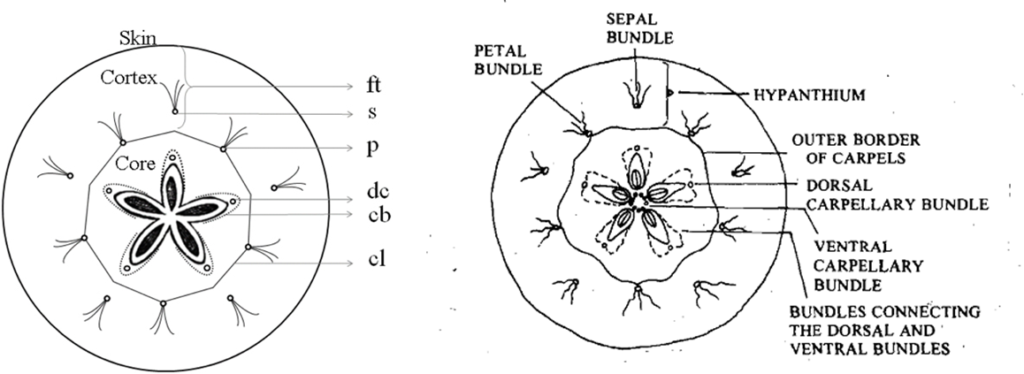
Figure 3. Diagram of lateral section of the apple showing gross morphology of apple fruit. ft, floral tube; s, sepal bundles; p, petal bundles; cl, outer limit of carpel or core line; dc, dorsal carpellary bundle; cb, carpellary bundles connecting dorsal with ventral carpellary bundles (Based on MacDaniels, 1940). (Taken from Herremans, E. et. Al 2015)
The M4 TORNADO is a non-destructive, high resolution micro- X-ray fluorescence instrument that can be used to produce detailed elemental maps of a sample area, using a spot size of 25 microns. This can be done both under atmospheric conditions or under vacuum (20 mbar) within a chamber that has a sampling area of 19 x 15cm. The M4 TORNADO and has two detectors that enable the detection of elements from sodium (Na) to uranium (U). For more information refer to Bruker M4 TORNADO. For these analyses conducted a spot size of 25µm at 100µm resolution (50kV, 400uA) was used on the cut sections of the samples.
To identify chemical variations within the apples, the M4 TORNADO micro-XRF was utilised to produce detailed element maps under atmospheric conditions. To observe the internal cross-sectional chemistry, two different apple varieties (Royal Gala and Fuji) were cut both on the and lateral planes for analysis. These two apple varieties were analysed when fresh, and again after being left to rot and dehydrate for a month (Fig. 1).
The dehydration of the apples caused the internal flesh to condense with the outer skin curling in on itself. The interior seed cavities became more pronounced and the reduction in the flesh enables the internal carpellary bundle of the core to be easily observed. Interestingly, the dehydration of the apples did not have much of an effect on the chemical variation between the fresh and rotted fruit.
The apples appeared to retained the same elemental distribution patterns within their structures, despite the beginnings of the decomposition. The elements are more concentrated within some of the structural zones such as the skin, carpel bundles and seed cavities due to the dehydration of the apples over the month. The vascular system that could be observed in the flesh of the fresh fruit is no longer defined after dehydration of the fruit.
For both the Fuji and Royal Gala apples, the dominant elements observed were potassium (K), calcium (Ca) and iron (Fe). These elements highlight the key structural regions of the apples, as well as nutrient pathways leading from the core to the outer skin (Fig. 4 and 5). Other minor elements identified were zinc (Zn), copper (Cu) and titanium (Ti), these were uniformly distributed throughout both varieties of apples, including within the seeds.

Figure 4: Cross sectional chemistry of the major elements between the fresh and rotten Fuji apple.
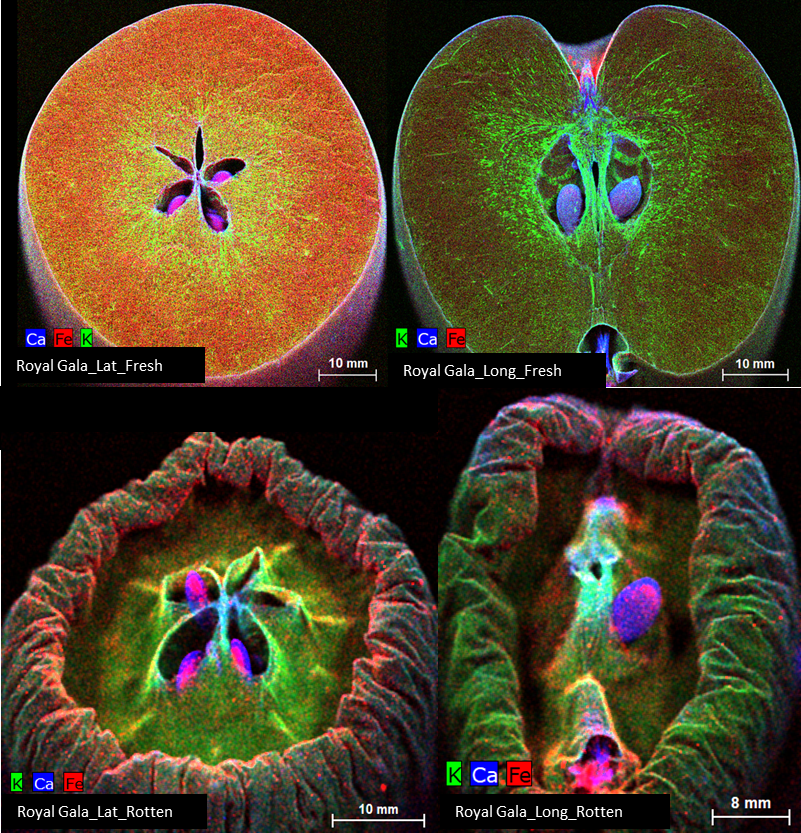
Figure 5: Cross sectional chemistry of the major elements between the fresh and rotten Royal Gala apple.
Knowing the distribution of the critical elements such as Ca, Fe and K is crucial for fruit growers as knowledge about the internal chemical structure and element uptake can indicate the health of the crop, and in some cases flavour. Studies on Ca uptake by apple varieties such as Honeycrisp apples have shown lower uptake of Ca can lead to more bitter flavour (5). Additionally, knowing the elemental distribution as the apple decomposes may be key to understanding the shelf life of the fruit.
Read part one here.
For more information on micro-XRF spectroscopy visit www.microxrf.com.au/.
Visit our YouTube channel, Professor Spectrum to watch live micro-XRF scans and instructional videos.
If you are interested in having your own sample analysed by micro-XRF, contact Portable Spectral Services p: 08 9321 2830 e: [email protected]
Product information on the Bruker M4 TORNADO micro-XRF.
1) Arnarson, A. Apples 101: Nutrition Facts and Health Benefits. Retrieved on 25/07/2020 from: https://www.healthline.com/nutrition/foods/apples
2) BASF. (2020). The chemistry of apples. Retrieved on 25/07/202 from: https://www.basf.com/global/en/media/magazine/archive/issue-6/the-chemistry-of-apples.html
3) Herremans, E. et. Al. (2015). Spatial development of transport structures in apple (Malus × domestica Borkh.) fruit. Frontiers in Plant Science, Volume 6, Article 679.
4) Lakso, A. Goffinet, M. (2013). Apple Fruit Growth. New York State Horticultural Society, New York Fruit Quarterly, Volume 21, Number 1.
5) Prengaman, K. (2018). High-res Honeycrisp: Cell structure scans offer new insight into why Honeycrisp is so prone to bitter pit. Retrieved on 25/07/2020 from: https://www.goodfruit.com/high-res-honeycrisp/

Portable Spectral Services Announces Exciting Management Transition
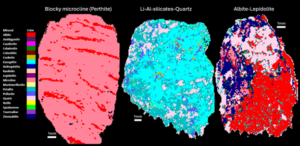
Our tool introduces uXRF (micro-X-ray fluorescence) scanning technology to RC chip analysis, enabling rapid, non-destructive, and quantitative analysis of major, minor, and trace mineral phases.
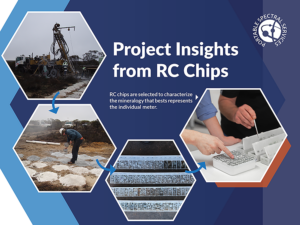
Automated micro-X-ray fluorescence (micro XRF) technology emerges as a powerful tool to rapidly and accurately capture the mineralogy of rock chip, RC and AC samples.

Findings of an ongoing regional evaluation study over concealed Proterozoic lithologies known to host magmatic nickel sulphides with potential to host other base-metal, gold and rare earth elements (“REE”) systems within the Fraser Range, Western Australia.
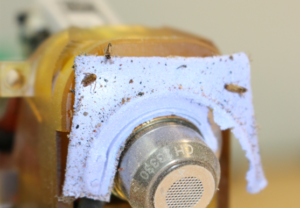
Findings of an ongoing regional evaluation study over concealed Proterozoic lithologies known to host magmatic nickel sulphides with potential to host other base-metal, gold and rare earth elements (“REE”) systems within the Fraser Range, Western Australia.
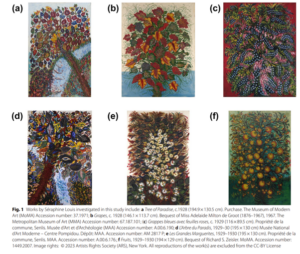
Findings of an ongoing regional evaluation study over concealed Proterozoic lithologies known to host magmatic nickel sulphides with potential to host other base-metal, gold and rare earth elements (“REE”) systems within the Fraser Range, Western Australia.
